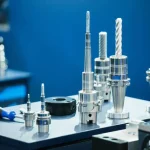In the world of dental restorations, achieving a lifelike and durable result requires precision and attention to detail. While the process of applying restorative materials is crucial, finishing and polishing are equally essential steps that often determine the final outcome. Proper finishing and polishing techniques can enhance the aesthetic appeal, longevity, and comfort of restorations, ensuring patients enjoy the best results. Here’s why choosing high-quality finishing and polishing materials is vital and how they play a significant role in restorative success.
Why Finishing and Polishing Are Important
Finishing and polishing help remove any surface imperfections and refine the restoration to achieve a smooth, natural look. Not only do these steps improve the aesthetics, but they also enhance the durability and comfort of the restoration. When restorations are meticulously polished, they are less likely to harbor plaque and bacteria, which can reduce the risk of long-term issues like gingivitis or secondary caries.
Benefits of High-Quality Materials
Using premium materials helps create a refined surface without damaging the underlying structure. Good quality products from reliable cosmetic dental supplies allow practitioners to work efficiently, saving time while achieving an optimal polish that resists wear and maintains gloss.
Key Techniques for Optimal Finishing and Polishing
- Use a Multi-Step Process: The most effective finishing often involves multiple steps, beginning with contouring the restoration and ending with a high-gloss polish. Each step should be carefully executed with the right materials to ensure consistency and quality.
- Select the Right Tools for Each Step: Each phase of finishing and polishing requires specific tools and materials. For example, diamond burs are ideal for initial contouring, while fine-grit discs or wheels are best for smoothing. Knowing which tools to use at each stage will help streamline the process.
- Pay Attention to Speed and Pressure: Controlling the speed and pressure of polishing tools is essential to avoid generating excessive heat, which can damage both the restoration and surrounding tissues. Using light pressure with a gradual increase can create an even, smooth surface without compromising the structure.
Tips for Effective Finishing and Polishing
- Maintain a Clear Protocol: Having a set protocol for finishing and polishing can help ensure consistency across all restorations. This reduces the likelihood of errors and helps maintain high standards of care.
- Invest in Quality Materials: Finishing and polishing materials designed for dental use, like those from Cosmetic Dental Supplies, provide better control, longer-lasting polish, and improved patient outcomes. Opt for materials specifically created for aesthetic restorations, as they are engineered to enhance visual and functional results.
- Stay Updated with Technique Advancements: The field of dental materials is constantly evolving, with newer techniques and products emerging regularly. Staying informed can help practitioners adopt practices that save time and improve outcomes.
Conclusion
Finishing and polishing are often overlooked yet vital steps in achieving a beautiful and durable dental restoration. By focusing on these final touches, practitioners can enhance the appearance, durability, and patient satisfaction with their restorations. High-quality cosmetic dental materials provide the right support, allowing professionals to create smooth, glossy restorations that blend naturally and last longer.
Ready to elevate your finishing techniques? Consider exploring advanced materials and refining your process to achieve optimal results in every restoration.







